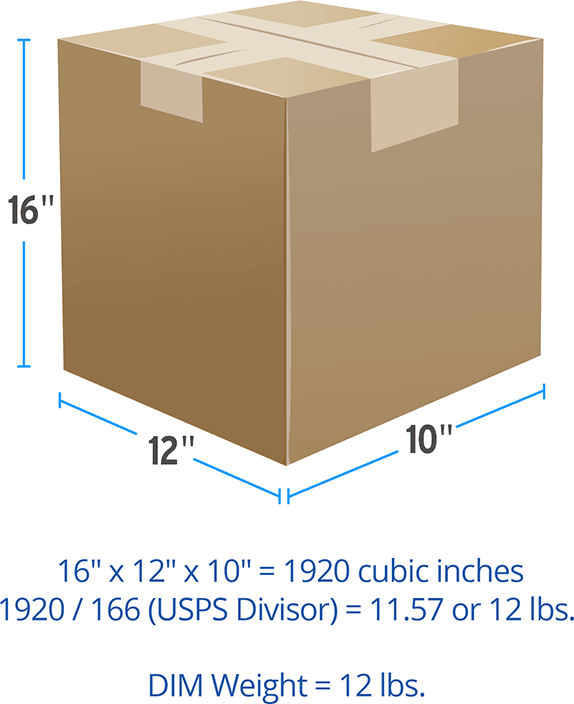How to Calculate USPS® Dimensional Shipping Weight

While a 1-pound package of pillows and a 1-package of clothing may weigh the same, they take up different amounts of space in a USPS truck. To take into account the difference between box sizes and weights of packages, the U.S. Postal Service utilizes Dimensional (DIM) weight to price packages over a cubic foot in volume. This means that the shipping cost for a package over one cubic foot may be based on the size of the package rather than the actual physical weight of the package.
What is Dimensional Weight?
Dimensional, or DIM, weight is a pricing structure that takes into account a package’s box dimensions as well as the package weight. As ecommerce sales grow, shipping carriers are running out of space on their delivery trucks, and they want to make sure retailers are using the smallest box to fill their trucks with as many packages as possible.
While other national carriers apply DIM weight for all package sizes, the USPS only uses DIM weight for packages over one cubic foot for Priority Mail®, Priority Mail Express®, Parcel Select, and Ground Advantage™ Packages.
Online retailers whose products are lightweight and larger in size (i.e. larger plastic toys, sports equipment, pillows, bubble wrap) will likely pay the DIM weight price instead of the standard, physical weight price. If a package’s calculated DIM weight is more than the physical weight, the shipper is required to pay the DIM weight rate.
Dimensional Weight Formula: How to Calculate DIM Weight
- First, you need to determine if your package is greater than one cubic foot (1,728 cubic inches). To do this, use the formula L x W x H. If the result is under 1,728, your package is UNDER one cubic foot. If the result is over 1728, then your package is OVER one cubic foot and DIM Weight pricing may apply.
- Next, weigh your package to find its actual physical weight.
- Finally, calculate the DIM weight by using the USPS Dimensional weight formula, which is L x W x H/166. (The 166 is known as the DIM Divisor—the USPS uses 166 while other national carriers use 139 as their divisor.) If the result of this calculation yields a higher weight than the actual physical weight of the package, you will pay the DIM weight price.

Let’s look at an example
Say you have a package that measures 16″ x 12″ x 10″ and weighs 2 pounds. Use the formula L x W x H to determine if the package is over one cubic foot.
The result is 1,920 cubic inches which is over the 1,728 one cubic foot threshold, so your package will qualify for DIM pricing.
Using the USPS formula 16″ L x 12″ W x 10″ H/166, we calculate the DIM weight value to be 11.57, or 12 pounds, which is greater than the package’s actual weight of 2 pounds. Since the DIM weight of your package is greater than the physical weight, you are required to pay the shipping rate for a 12-pound package. As you can see, using the smallest box size for your products is very beneficial to keep your shipping costs low.
How Stamps.com Can Help
Determining a package’s DIM Weight is easy with Stamps.com. Simply enter the weight, box dimensions, and destination of your package, and Stamps.com will automatically determine the correct USPS shipping rate for the package—no manual calculation is needed.
Perks of your risk-free trial
- Free mailing supplies
- Free 5 lb digital scale
- Free scheduled pickups
- No contract, cancel any time










